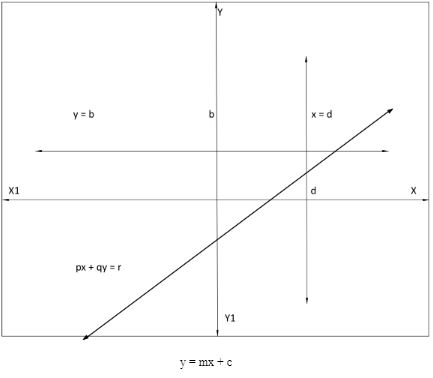Linear Equation Definition
Linear Equation is defined as an algebraic expression that can be written in the form of x+b = 0, having a variable with exponent (power) of 1. There are 2 types of the linear equation – Linear equation in one variable and linear equation in two variables. The graphical representation of a linear equation in one variable is always a straight line horizontally or vertically and the graphical representation of a linear equation in two variables is also a straight line.
What is a linear equation?
An equation with the highest exponent 1 of the variable and that equation when presented graphically, forms a straight line is called a linear equation.
Linear equation in one variable:
A linear equation in one variable is defined as an equation that is used to represent and solve for an unknown quantity. A linear equation in one variable is always in the form “ax+b=0” Where a and b are two integers and x is a variable. For example,
If x+5 = 15.
We need to find “y” from this equation i.e. only one variable is present in this equation. This equation has the highest exponent of 1 and there is only one solution of this equation. So this type of equation is known as a linear equation in one variable. Therefore, we can recognize a linear equation by seeing that only one variable is present with an exponent one on it.
Linear equation in two variables-
Linear equation in two variables is defined as an equation that is used to represent and solve for 2 unknown quantities. A linear equation in two variables is generally in the form “ax+by+c=0”. Where a, b and c are three integers, both a and b are not equal to 0 and x and y are the two variables in it.
A pair of linear equations in two variables can be solved by using different methods like the elimination method, substitution method, graphical method, and cross-multiplication method. The geometrical or graphical representation of a pair of linear equations in two variables is always a straight line. The general form of pair of linear equations in two variables are given as
p1x + q1y + r1 = 0
p2x + q2y + r2 = 0
In the above equations, p1, p2, q1, q2, r1 and r2 are the integers and p1² + q1² ≠ 0 and p2² + q2² ≠ 0. Here, p1, p2, q1, q2 are known as coefficients of the variables x and y respectively.
Linear equation formula:
There are several formulas for linear equations in one variable and linear equations in two variables where a line can be defined in an (x,y) plane. The common formulas are:-
- The linear equation formula in general standard form is written as
(px + qy = r)
Where,
- p ≠ 0
- p, q, r are real numbers
- m = -p/q
- The linear equation formula for the vertical line is written as
x = d
- The linear equation formula for a simple slope-intercept form is written as
(y = mx + c)
Where,
- x and y are the two variables
- m is the slope of the line and
- c is the y-intercept
The value of y when x is 0 is called the y-intercept because (0,y) is the point at which the line crosses the y-axis. Henceforth, the linear equation formula is given as: (y = mx + c)
- The linear equation formula for the Horizontal line is written as
y = b
- The linear equation formula for two-point form is written as
{y – y1 )= m(x-x1)}
Where,
- (x1,y1) and (x2,y2) are the two points on the line
- m = (y2-y1)/(x2-x1)
- x1≠x2
- The linear equation formula for intercept form is written as
x/x0 + y/y0 = 1
Where,
- x0= x-intercept
- y0 = y-intercept
The graphical representation of these linear equation formulas are given below

 Profile
Profile Settings
Settings Refer your friends
Refer your friends Sign out
Sign out






